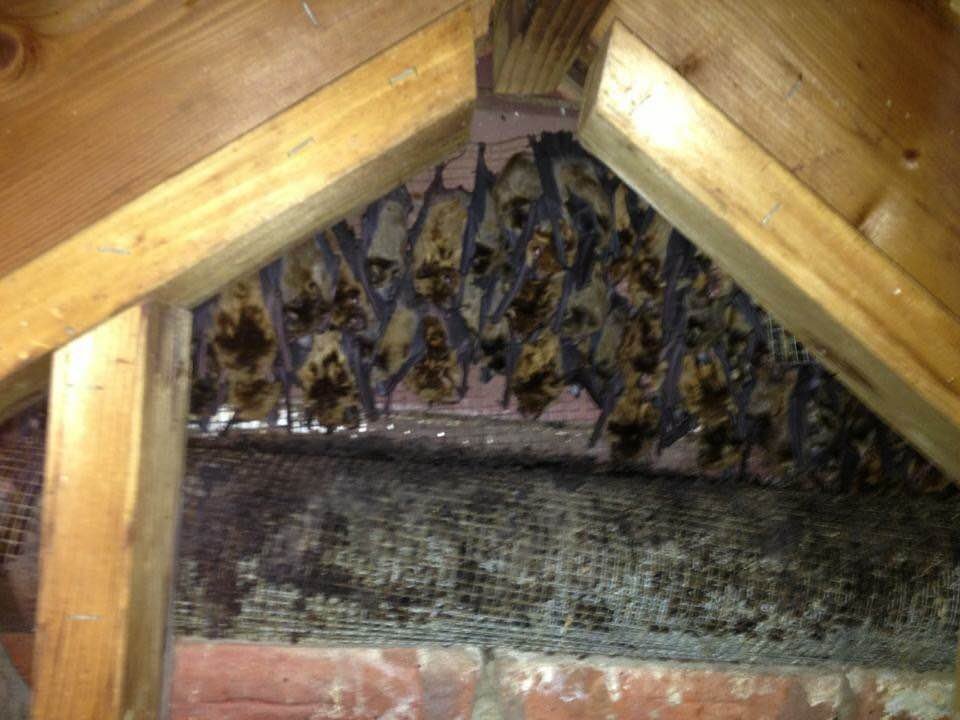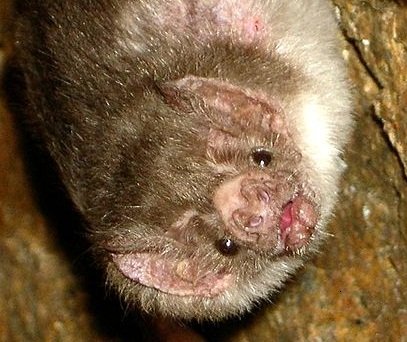Evidence Of Bats in Attic

Some critters try to enter your home to make their habitat, and understanding the signs of bats in the attic will aid in controlling an infestation before it gets out of hand. These creatures are dangerous when at your house. Nuisance bats carry parasites and diseases that can infect you and your family.
Hearing strange noises in the attic indicates that a wild animal has made its way into your home. But what kind of animal is producing strange sounds? The most common attic infesters are bats, rodents, raccoons, and squirrels. Bats can be difficult to detect because they tend to be quieter than a loud raccoon or scurrying squirrel. Homeowners can keep an eye out for evidence around their homes to detect the presence of bats.
Signs Of Bats In The Attic
You probably don’t want to go up into your attic with a flashlight in the middle of the night looking for flying bats. Fortunately, you won’t have to because bats leave behind evidence that can be noticed from outside the attic. When searching for bats, keep the following signals in mind:
High Pitched Noises
Hearing noises from the ceiling could indicate various things, but bats’ squeaking and flapping are easy to recognize. Bats are nocturnal species, so you’ll most likely only hear them squeaking and flapping at night or near dusk and morning. If you hear unusual squeaky noises coming from overhead, it’s a sure indicator that bats have taken up residence in your home.
Bat Feces
 Bat guano is a common sign and visible evidence of localized bat activity near your home. Bat guano is the feces of bats. However, the signs that arise as a result of bat guano can also be linked to their urine. If you notice piles of bat guano near window sills, door frames, attic spaces, or anywhere else in or around your property, bats are most likely present.
Bat guano is a common sign and visible evidence of localized bat activity near your home. Bat guano is the feces of bats. However, the signs that arise as a result of bat guano can also be linked to their urine. If you notice piles of bat guano near window sills, door frames, attic spaces, or anywhere else in or around your property, bats are most likely present.
Guano can be distinguished from other animal species droppings because it contains small fragments of undigested insect components and is often softer/bigger. Even if you can’t see the bat guano, there are clues that bats are present, such as walls stained by the critter’s feces or urine.
Stains On The Exterior Of The Home
Bats are not rodents, and they do not eat through or damage a building’s construction on purpose. On the other hand, their urine includes uric acid, which can harm a building’s structure over time (for example, the waterproof membrane underlying the tiles, wooden shingles, or metal sheets of a roof), causing future leaks and structural deterioration. It’s common to notice it dripping down the wall from a roosting or access site.
Bats have an oil gland on their chest that secretes oil to maintain and waterproof their fur. When they enter a roost site, they frequently rub up against the building’s side, transferring part of the oil to the structure. This staining starts as a light-brown discoloration, but it progresses to a dark, oily stain over time.
Ammonia Smell
The smell of ammonia, particularly if it comes from the ceiling, indicates the presence of bats in the attic. The fragrance of bat droppings is poisonous and unpleasant, smelling like ammonia. This odor is one of the most telling indicators that you have a wildlife problem in your home that needs to be addressed. When you can smell the animals, it suggests they’re leaving enough droppings for you to detect, so there’s a good chance you’ve got more than one.
How Can Bats Get Into An Attic?
 Bats, unlike other animals, do not necessarily want to be inside your house. However, bats on the outside of your home may find their way inside for various reasons. If frightened, they may seek cover from danger by looking for the nearest opening. Chimneys, open doors or windows, and holes in your house are all examples of this. Bats can fit through gaps as small as your finger since they weigh less than two ounces. 1Go To Source dph.illinois.gov -“Bats and Bat Exclusion”
Bats, unlike other animals, do not necessarily want to be inside your house. However, bats on the outside of your home may find their way inside for various reasons. If frightened, they may seek cover from danger by looking for the nearest opening. Chimneys, open doors or windows, and holes in your house are all examples of this. Bats can fit through gaps as small as your finger since they weigh less than two ounces. 1Go To Source dph.illinois.gov -“Bats and Bat Exclusion”
If a pregnant female bat is ready to give birth, she may look for a way into your home. Pregnant bats look for safe places to raise their young, such as buildings and trees. Bats may be attracted to obvious openings around your home. Be mindful that pregnant bats might congregate and create colonies. As a result, openings in your property may be attracting more than one bat. 2Go To Source dwr.virginia.gov -“Nuisance Bats in Homes or Buildings”
Bat Removal And Prevention Services
If bats have already taken up residence in your attic, you will want the services of a professional pest control company. Because bats are federally protected, extra caution must be exercised when removing them. The challenges in detecting these pests and the potential health dangers they offer require the services of an experienced bat removal technician.
The pre-qualified bat exclusion professionals employ specialized techniques to safely and humanely remove bats. They can also assist you in bat-proofing your residence. Contact Animals Happen immediately at 833-633-1120 if you have any inquiries or require wildlife removal services.
Sources:
- “Bats and Bat Exclusion | IDPH.” Dph.Illinois.Gov, Illinois Department of Public Health, dph.illinois.gov/topics-services/environmental-health-protection/structural-pest-control/bats-exclusion. Accessed 27 July 2021.
- “Nuisance Bats in Homes or Buildings.” Virginia DWR, Virginia Department of Wildlife Resources, dwr.virginia.gov/wildlife/bats/nuisance-bats-in-homes-or-buildings. Accessed 27 July 2021.
- Kaplan, Matt (2011). “Ancient bats got in a flap over food”. Nature. doi:10.1038/nature.2011.9304.
- Elizabeth G. Crichton; Philip H. Krutzsch (12 June 2000). Reproductive Biology of Bats. Academic Press. ISBN 978-0-08-054053-5.
Altringham 2011, p. 114–119. - Neuweiler, G. (2000). Biology of Bats. Oxford University Press. p. 247. ISBN 978-0-19-509950-8.
- Fenton, M. B. (1983). Just Bats. University of Toronto Press. ISBN 978-1442655386.
- Kunz, T. H.; Fenton, B. (2005). Bat Ecology. University of Chicago Press. p. 216. ISBN 978-0226462073.
